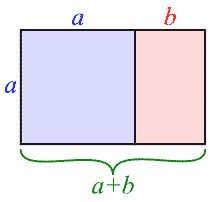The 'Traditional' upright piano from Cavendish Pianos
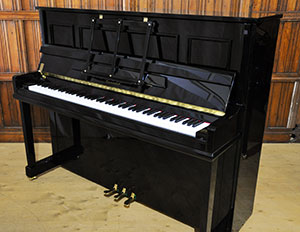
Cavendish Traditional 124 upright piano
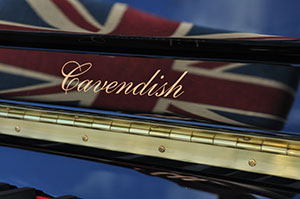
British Made Cavendish Pianos are made to the most exacting standards
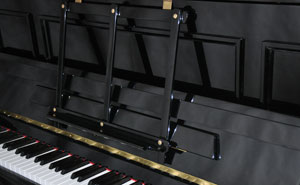
Traditional panelled front allows sound to be directed to player.
Traditional music rest.
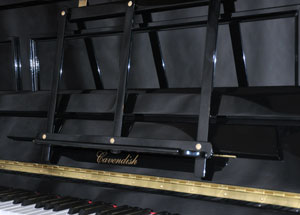
Remember when pianos looked like pianos?
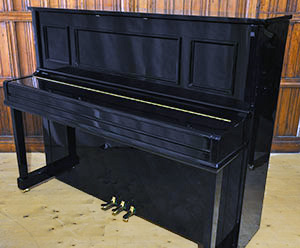
British craftsmanship and British hardwood. The way it should be.
Cavendish Traditional
The Cavendish Traditional is a good example of function affecting form in a truly
positive way.
The Cavendish Traditional is the only new piano on the market made with a
panelled cabinet the way pianos always were before machined boards of plywood
and MDF were invented.
Apart from its stunning good looks there are other reasons why a panelled
cabinet is desirable. Using a thinner, acoustically sensitive panel the
sound is amplified and the true tone of the instrument is heard. Using modern
flat boards can sometimes deaden the tone making the piano sound as if it's "trapped in a box."
Made using polished hardwood jointed in the old fashioned way makes the Cavendish
Traditional a piano of heirloom quality.
Remember when music rests were large enough to hold music and had page holders
on them to hold the book open?
Those days are back!
Dimensions:124cm high, 153cm wide, 62cm deep .
![]()
If you decide to trade-in your Cavendish upright piano for a new Cavendish grand piano at any time within ten years, you will receive a trade-in credit equal to your original purchase price.

David Wilson
David designed the Cavendish Traditional case.
Originally educated as a design
engineer.
After
15
years experience, David Wilson turned a life-long interest in furniture making
into
a new career
in 2003
after
training at Leeds College of Art and Design. Well grounded in traditional and
modern furniture making materials and techniques, David's passion is for applying
a clean-lined engineering approach to his designs while still creating superbly
crafted furniture, always without compromise. He is currently based with DesignerMakers
Furniture in Otley.

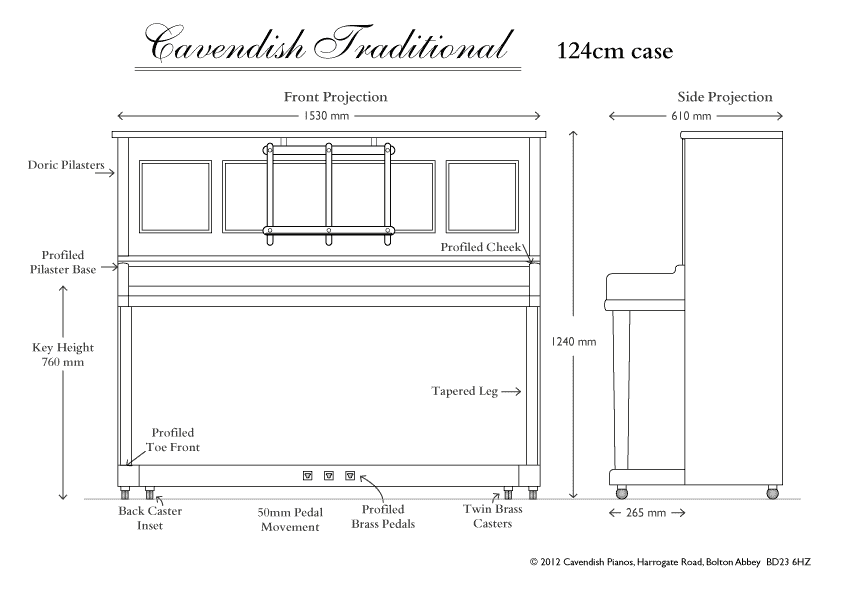
Interestingly, we used the Golden Ratio in designing the Cavendish Traditional
upright. At least since the Renaissance, many artists and architects have proportioned their works to approximate the golden ratio—especially in the form of the golden rectangle, in which the ratio of the longer side to the shorter is the golden ratio—believing this proportion to be aesthetically pleasing.
Golden ratio
Line segments in the golden ratio
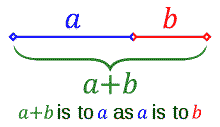
In mathematics and the arts, two quantities are in the golden ratio if the
ratio of the sum of the quantities to the larger quantity is equal to the ratio
of the larger quantity to the smaller one. The figure below illustrates
the geometric relationship.
Expressed algebraically![]()
where the Greek letter
phi (φ) represents the golden ratio. Its value is:
. [1]![]()
At least since the Renaissance, many artists andarchitects have proportioned
their works to approximate the golden ratio—especially in the form of the
golden rectangle, in which the ratio of the longer side to the shorter is
the golden
ratio—believing this proportion to be aesthetically pleasing (see Applications
and observations below).Mathematicians have studied the golden ratio because
of its unique and interesting properties. The golden ratio is also used in
the analysis of financial markets, in strategies such as Fibonacci retracement.
The golden ratio is often called the golden section(Latin: sectio aurea)
or golden mean. Other names include extreme and mean ratio, medial
section, divine proportion, divine section (Latin:sectio divina), golden
proportion,
golden cut, golden number, and mean of Phidia
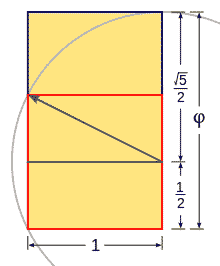
Construction of
a golden rectangle:1. Construct a unit square (red).2. Draw a line from the
midpoint
of one side to an opposite corner.
3. Use that line as the radius to draw an arc that defines the long dimension
of the rectangle.
A golden rectangle with longer side a and shorter side b, when placed adjacent
to a square with sides of length a, will produce asimilar golden rectangle
with longer side a + b and shorter side a.
This illustrates the relationship
.
